When it came to picking our overall winner for 2017 Driven Car of the Year, it was a tough choice becauseour five finalists were outstanding.
This year Driven decided to mix up our Car of the Year categories to reflect our readers’ interests.
For the first time we have: Little Beauties (covering light/compact cars, and small SUVS); Family Chariots (medium/large cars, medium/large SUVs), Only For the Rich (premium cars, luxury SUVs); Lotto Winner’s Choice (performance vehicles); Tradies’ Delight (utes/vans); and Green Power (hybrids and EVs).
We also picked our Driven Motorbike of the Year, judged by Mathieu Gillett-Day.
Judges for 2017 Driven Car of the Year were Tony Verdon, Liz Dobson, Colin Smith and Cameron Officer.
Our finalists for the ultimate title — Driven Car of Year — cover all bases and price ranges — from the dinky Suzuki Ignis SUV (from just $18,900) to Hyundai’s first EV, the Ioniq, and Skoda’s award-winning Kodiaq SUV, Honda’s hurrah back in the sports market with the Civic Type R, and BMW’s 5 Series business sedan.
After many hours of robust debate, the judges picked the winner though all were exemplary in their broad segments.
And the winner is ...
BMW’s 5 Series
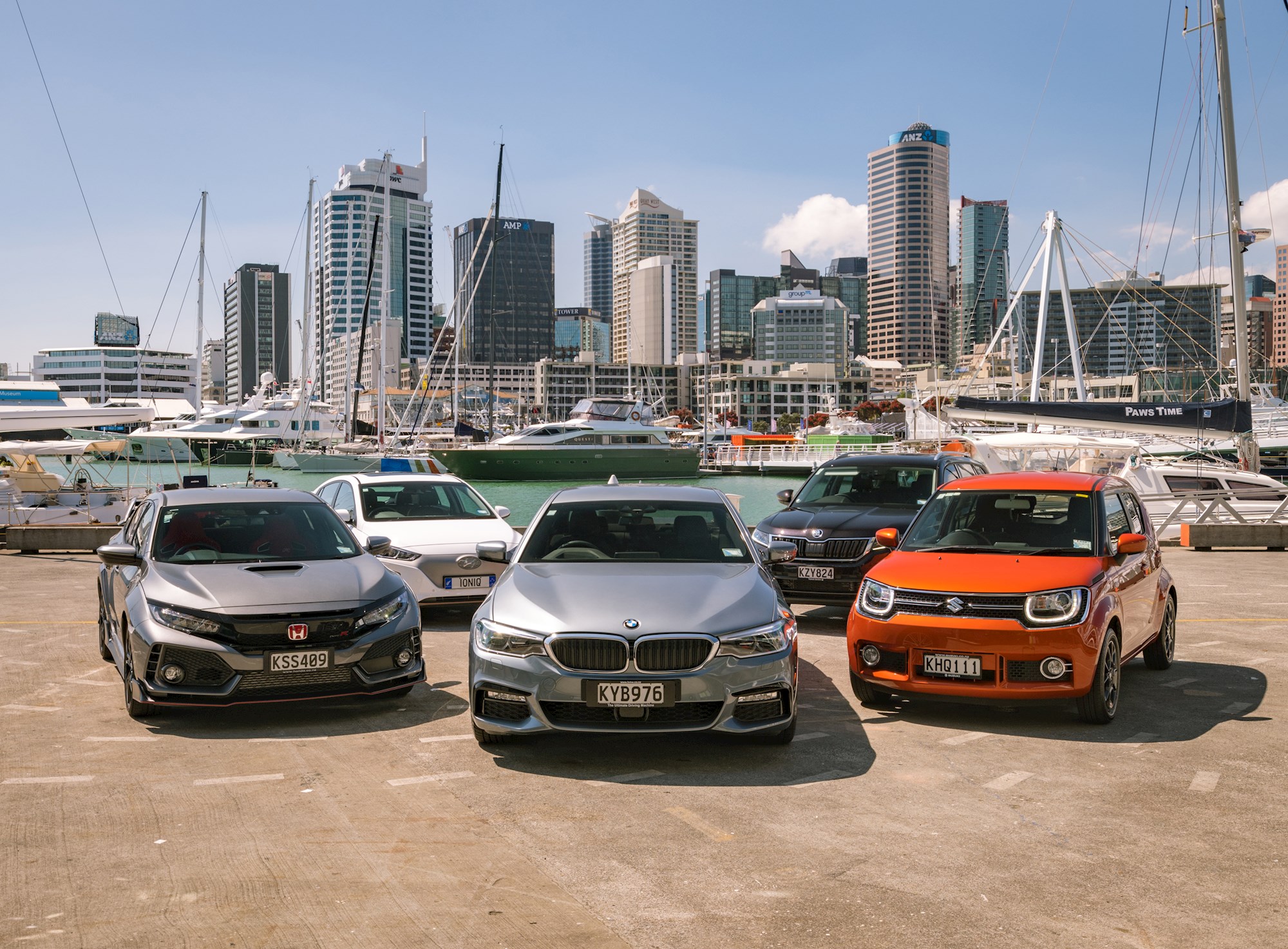
The Driven judges felt this business sedan was not only a standout for its segment with its plethora of technology but had the looks and performance to back up its credentials.
Kiwis have the choice of 530 diesel, 540i petrol and all-new 520 diesel with prices from $99,900.
It wowed us at the local launch with its performance on the road, plus the ease of use of BMW’s semi-autonomous driving system that is leaps ahead of its competition.
We also loved the optional self-parking ability used via the large keyless remote, and it came into use frequently. A great example was an elderly woman who had parked too close to our test model. When she offered to move, we instead stood next to the car, and backed it out of the spot.
She clutched her chest as the driver-less car reverse and said, “this is too much for me, it’s too futuristic, it’s like sci-fi”.
For us, the BMW 5 Series sedan is the future.
Read our full BMW 5 Series road test.
-Liz Dobson
This year Driven decided to reflect our readers' interests in our Car of the Year categories more. For the first time we have:
- Little Beauties (covering light/compact cars, and small SUVS)
- Family Chariots (medium/large cars, medium/large SUVs)
- Only For the Rich (premium cars, luxury SUVs)
- Lotto Winner's Choice (performance vehicles)
- Tradies' Delight (utes/vans)
- Green Power (hybrids and EVs)
- Motorbike of the Year
Little Beauties: Suzuki Ignis
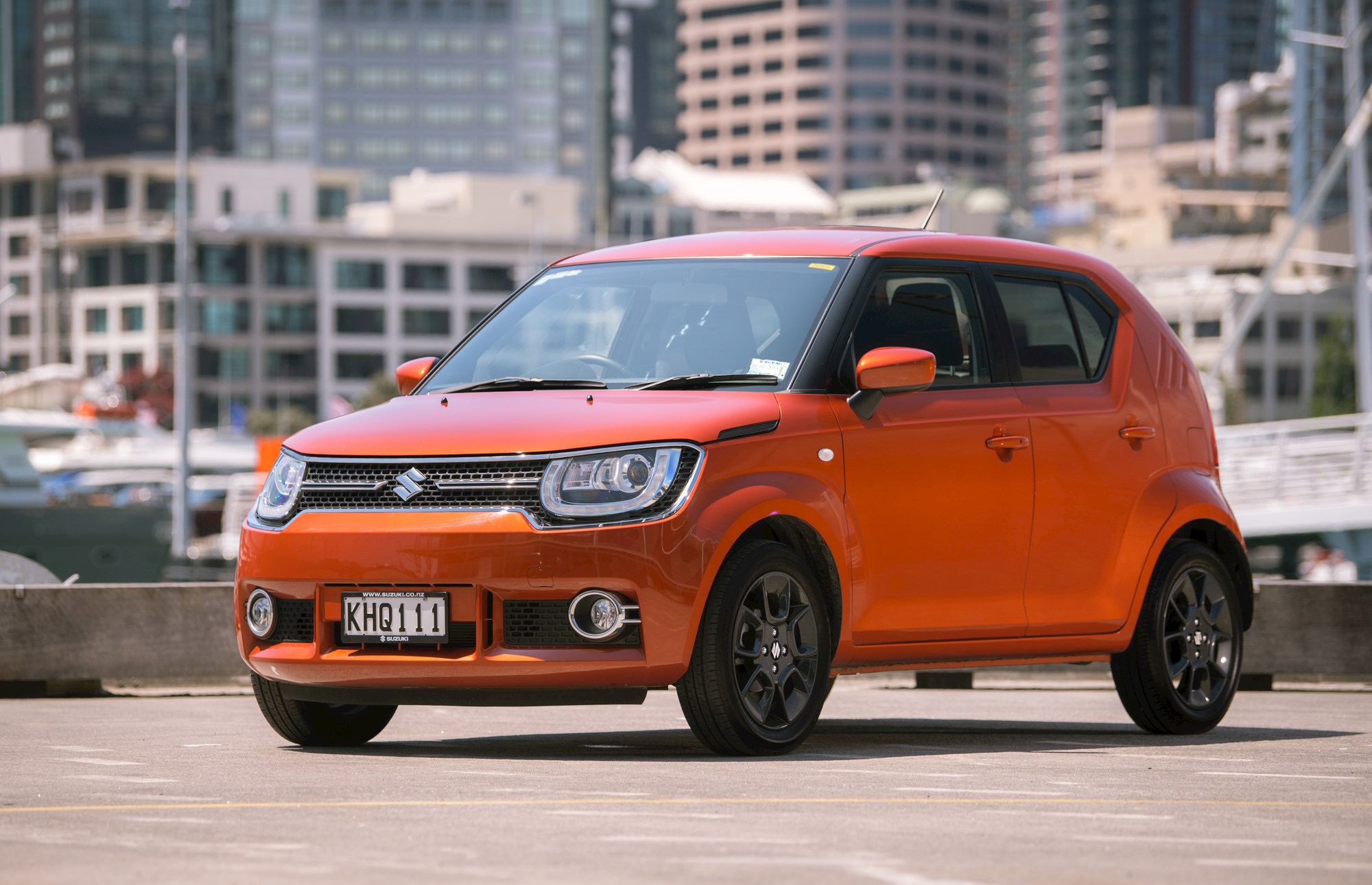
They may be small but the selection for this category was huge for 2017, encompassing light/compact cars and the burgeoning segment of small SUVs.
Suzuki's Impreza was in contention as well as Honda's Civic hatch, Audi's Q2, and Suzuki's nod to its heritage, the Ignis small crossover.
While the Impreza was value for money, the winner for the segment was the funky and old-school Ignis, thanks to it being fun to drive and satisfying to look at.
Its quirky styling – harking back to Suzuki's diminutive 1970s Cervo/Fronte coupe plus its height and go-kart style wheel positioning makes it a head-turner.
The Ignis is a tall car but hides it well – its 180mm ground clearance figure is only 5mm lower than a Suzuki Vitara SUV. That height translates well inside, though, with plenty of headroom but not at the gawky expense of the car's overall looks.
The price is impressive too, with entry level manual GLX from $18,990 while the Limited is $22,500
While it's not a coupe like the forefathers from which its designers drew inspiration, it works better as a modern mode of city transport for all.
Read our full Suzuki Ignis road test here.
– Cameron Officer
Family Chariots: Skoda Kodiaq
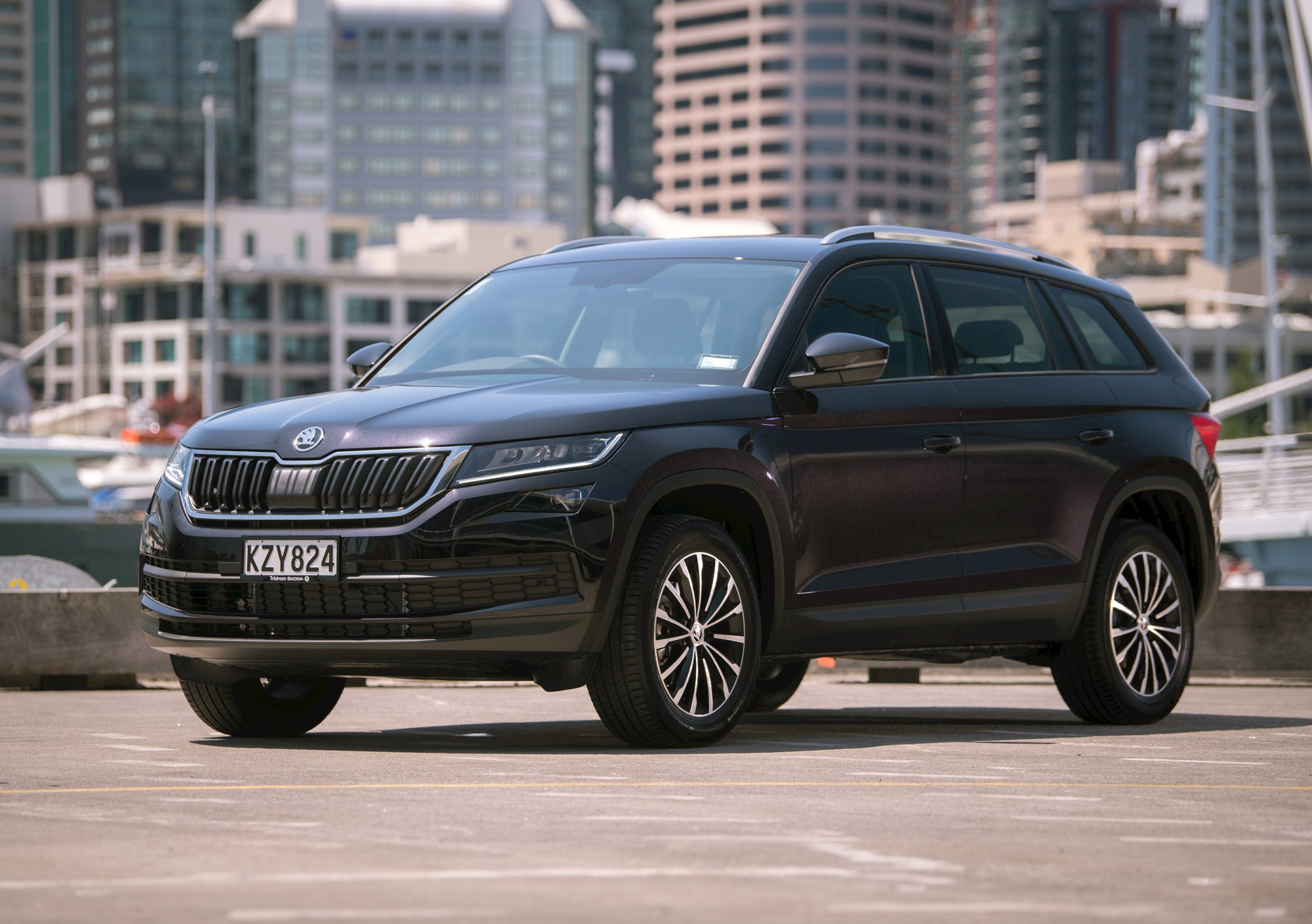
New SUVs continued to arrive at an astonishing pace in 2017.
Some debuted with claims of re-inventing the segment and some went to considerable lengths to avoid looking like an SUV with swoopy coupe-inspired styling — moving far enough from the SUV template that you question why people don’t buy a car or a station wagon.
The Skoda Kodiaq arrived here in May and sidestepped the distractions to deliver on SUV fundamentals – such as genuine five-plus-two seating, generous cargo space, choices of both front-drive and all-wheel-drive models and ground clearance that can be put to use in rough road work.
Design origins within the Volkswagen Group family of MQB modular platform vehicles means the Kodiaq has plenty of choice between modern petrol and diesel engine efficiency and the twin-clutch transmissions to avoid the CVT compromise found in some SUV rivals.
The platform also enables a comprehensive roster of active safety and driver assist technologies and the cabin is modern – a highlight the impressively crisp touchscreen display.
Kodiaq’s styling is handsome without letting form overrule function so the big Skoda neatly defines what a medium-to-large, family-focus SUV should be.
Kodiaq ticks the boxes and the driving experience combines excellent comfort, visibility and sure-footed dynamics. It provides additional delight with its clever door edge protectors, removable torch rear courtesy light and front door umbrella stowage.
The practical and driving appeal is supported by a price ladder value that starts at $39,990 and climbs to just over $58,000.
You can look across SUV choices and find plenty of appealing vehicles. Yet in almost all cases, I reach a conclusion that product X largely fits the bill but I wish it had avoided a CVT – or its diesel engine should perform better or the time has come for some ‘‘down-size’’ direct-injection turbo petrol torque and efficiency.
Others miss out on a seven-seat option. Some are just too expensive.
The Skoda Kodiaq has the key design features and logically structured model range that gets closest to being the ‘‘no buts’’ family SUV option. It ranks among the stars of 2017’s new vehicle introductions.
Read our full Skoda Kodiaq road test.
- Colin Smith
Only For the Rich: BMW 5 Series
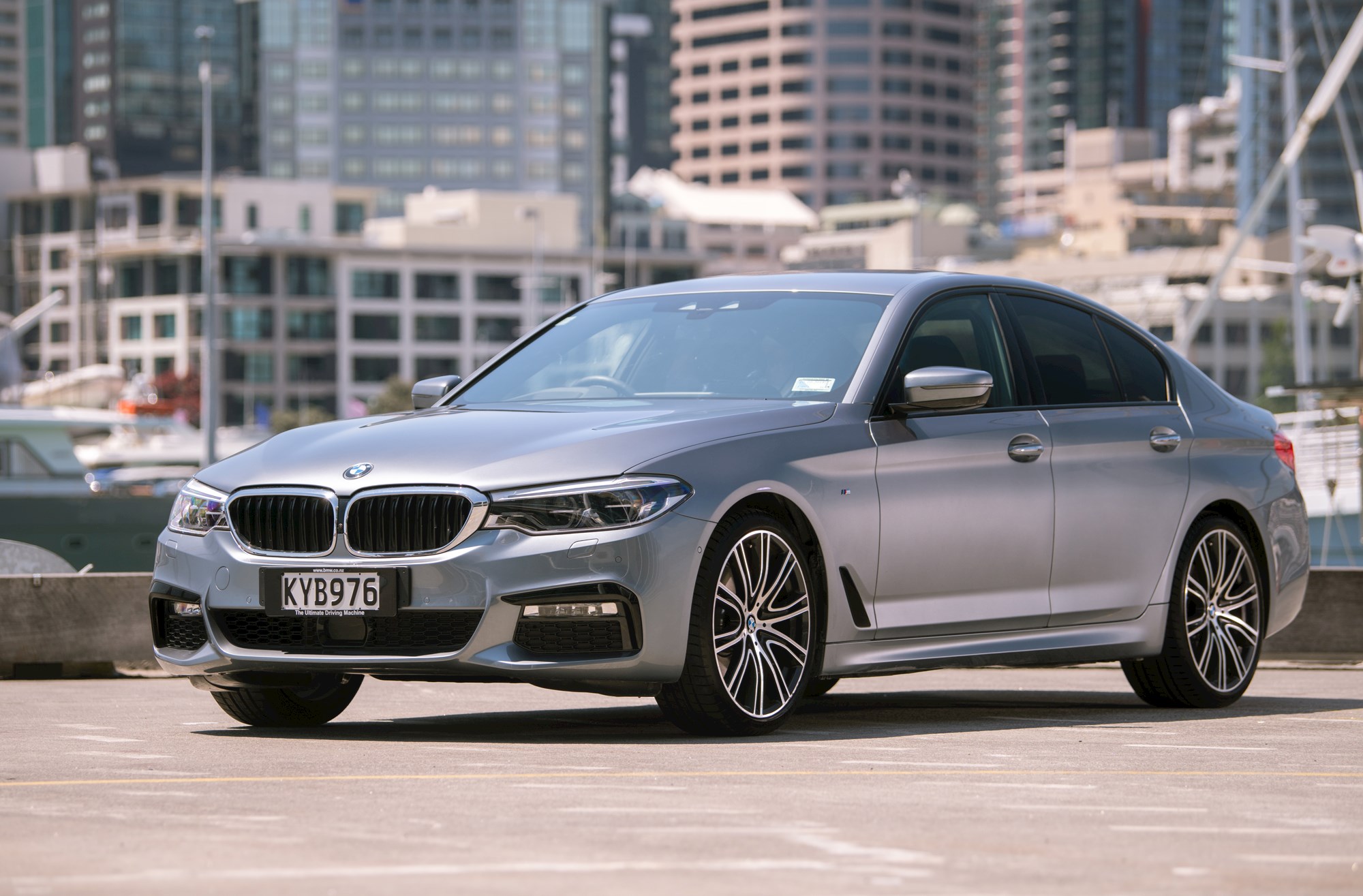
Your budget is unlimited and you’re used to having a fleet of expensive vehicles in your driveway, so what new product launched this year could you possibly add?
The choices were vast when it came to our new category, “Only for the Rich” – criteria for which were premium cars and luxury SUVs launched this year in New Zealand.
There was plenty to choose from, with Aston Martin DB11 sitting alongside Range Rover’s Velar and BMW’s 5 Series in our list of finalists for this exclusive segment.
But one vehicle that stood out — BMW’s seventh generation 5 Series. Not only is it full of technology — such as semi-autonomous driving, gesture control and remote parking — it is also a superb vehicle to sit behind the steering wheelfor a long drive.
Driven first tested the 5 Series at the global launch in 2016 but, at the local reveal this year, our judges experienced what makes this business sedan so special.
Visually the all-new 5 Series has had a major overhaul inside and out but it’s the front end that is the most striking. The front LED headlights merge into the kidney grille giving it a dynamic appeal. Above the LED headlights is a brushed chrome effect while the lights are now hexagonal rather than round.
Inside, the car’s simple layout makes it easy to engage functions including semi-autonomous driving, while the improved gesture control made us think, “how have I coped so long without it?”
The self-parking function found on the option large keyless remote was a delight to use — and highly practical when it came to tight car park spaces.
On our long test drives, the judges found the all-new 5 Series bliss to drive, making long trips a breeze.
Read our full BMW 5 Series road test.
-Liz Dobson
Lotto Winner's Choice: Honda Civic Type R
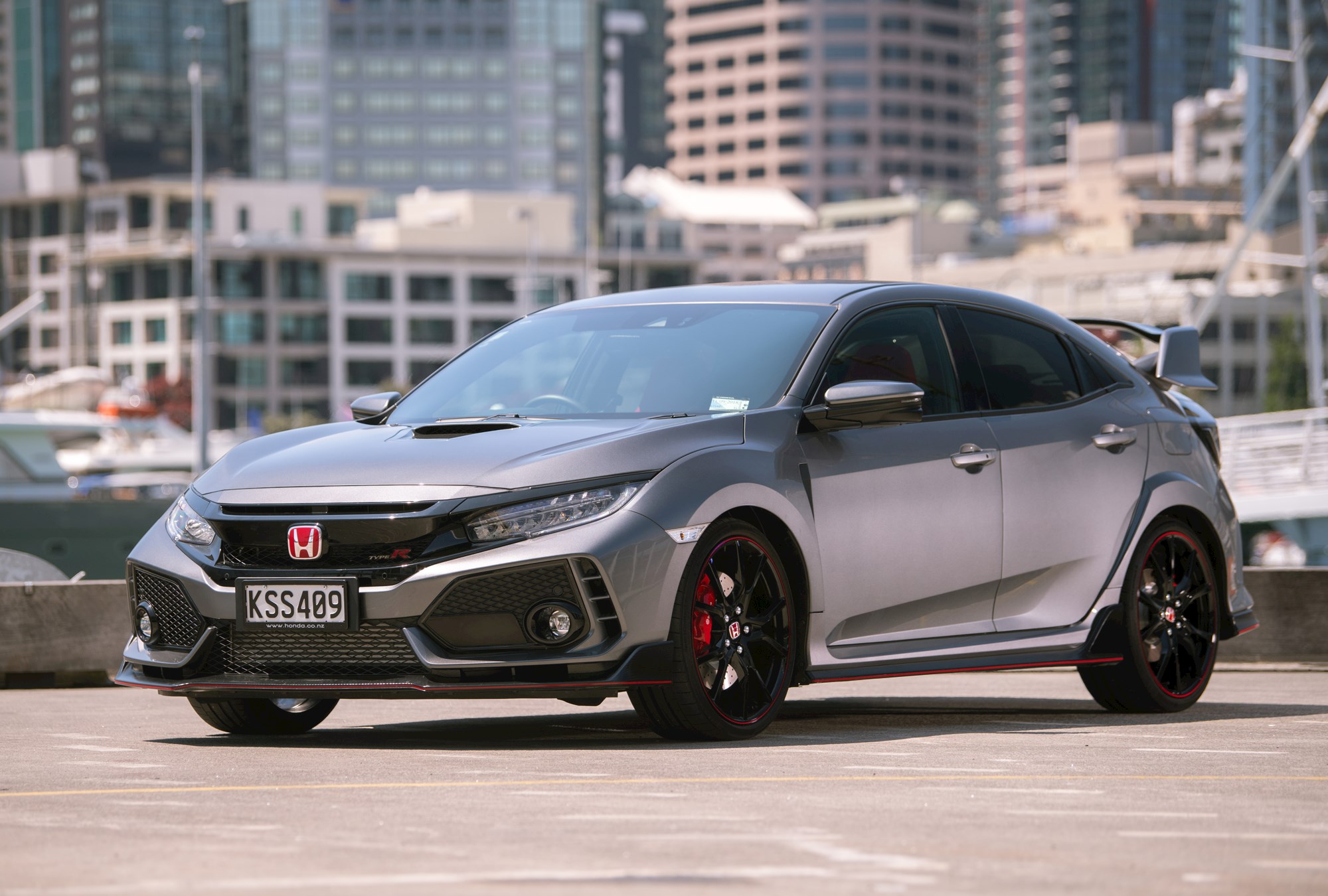
The Honda Civic Type R
Few new models this year created the buzz surrounding the arrival of the Honda Civic Type R, the sports sedan available here new for the first time.
The Type R earned its chops through eight model generations and New Zealand fans, up until now, either had to drool from afar or import the car themselves.
But Honda New Zealand this winter started selling the FK8-generation Civic Type R, in all of its aggressive glory.
It enters a busy segment of the market, up against similar sporty hatches such as the Ford Focus RS, the Volkswagen Golf R and the Subaru WRX STI.
Early next year the hot hatch segment will become even more competitive with the introduction of the Hyundai i30 N Series.
But in the meantime the Type R continues to win over New Zealand enthusiasts, boosting Honda's resurgence in the marketplace.
The muscular body styling and aerodynamic modifications distinguish the Type R from its Civic siblings; on the road it has a spectacular stance. The aggressive bumper is accentuated with a winged carbon-fibre splitter and red accent line, while slatted ducts add width to the bumper and diamond-mesh inserts fill the sculpted air intakes.
The Type is powered by a 2-litre K-Series engine, producing 228kW and 400Nm of torque.
Inside, the Type R has comfortable sports seats and all the trimmings motorists love. While some critics say the Type R is too track-oriented to be a comfortable everyday road car, others say it is the most capable Type R ever, and great value at $59,900 plus ORCs.
Either way the Type R provides another option for those looking for an aggressive-looking, sporty street car that handles superbly whether being driven not-so-sedately on the road or outright aggressively on the track.
Read our full Honda Civic Type R road test.
-Tony Verdon
Tradies Delight: Renault Master range
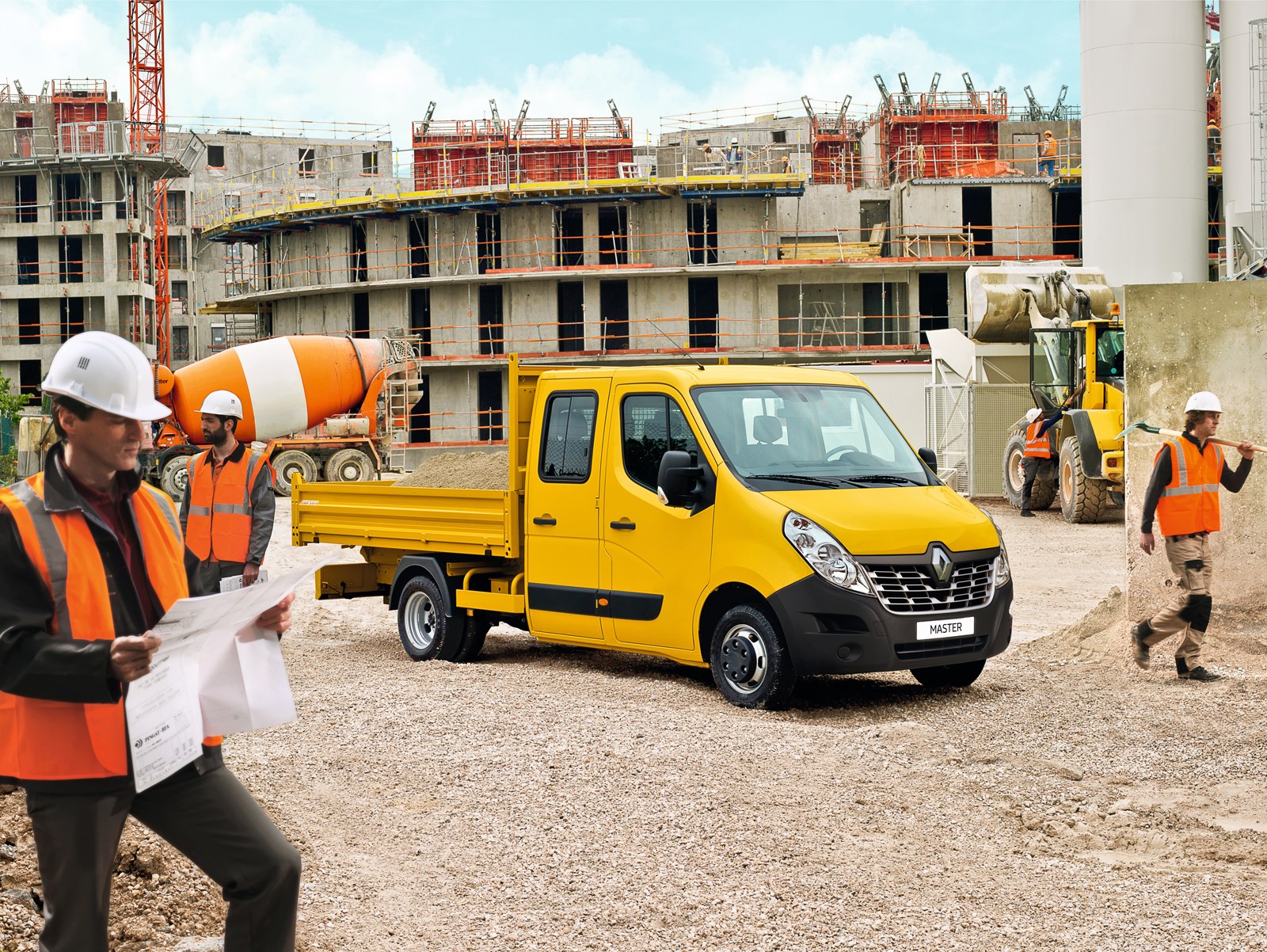
Combined, Renault's commercial arm this year delivered the kind of variety van assortment that had us reaching for the 'chocolate box' analogy.
The company has been pushing hard in the light commercial vehicle sector of late – a part of the market long dominated by Japanese manufacturers – with Kangoo and Trafic cargo-carriers. We've sung the Trafic's praises in particular in the past but now, with the massive Master added to the line-up, Renault really does boast a comprehensive fleet offering.
Not only is the French company's overall variety of van impressive, the degree to which the Master as a stand-alone model can be configured to suit is pretty admirable too.
We sampled the 'big daddy' first; the Renault Master L4H3, which features a colossal 17m³ of load space and a load weight of 4.5-ton. This particular iteration represents life at the top-end of things, but there are other Masters boasting different dimensions to choose from.
You can also order the Master with manual or automatic transmission and as a front- or rear-wheel drive model. Low-, mid- and high-roof iterations can be ordered too, as can all manner of door configurations to suit the size and shape of your bread-and-butter cargo combinations.
Crucially this year, Renault has moved the Master on from appealing to freight-forwarders to those on construction sites as well.
Now available as a cab-chassis vehicle, Renault has a medium-sized truck worth a second look. Because flexibility appears to be key, the Master Cab-Chassis can be had in either single- or double-cab format, with payloads registering in at 2272kg or 2490kg respectively.
And despite all the options list-ticking the Master range allows, a distinct through-line here remains the driveability and comfort of these vans. A good driving position, excellent outward visibility, responsive acceleration and steering and all the Bluetooth techno-trickery you'd expect are a given. Nice work, Renault.
Read our full Renault commercial review
- Cameron Officer
Green Power: Hyundai Ioniq
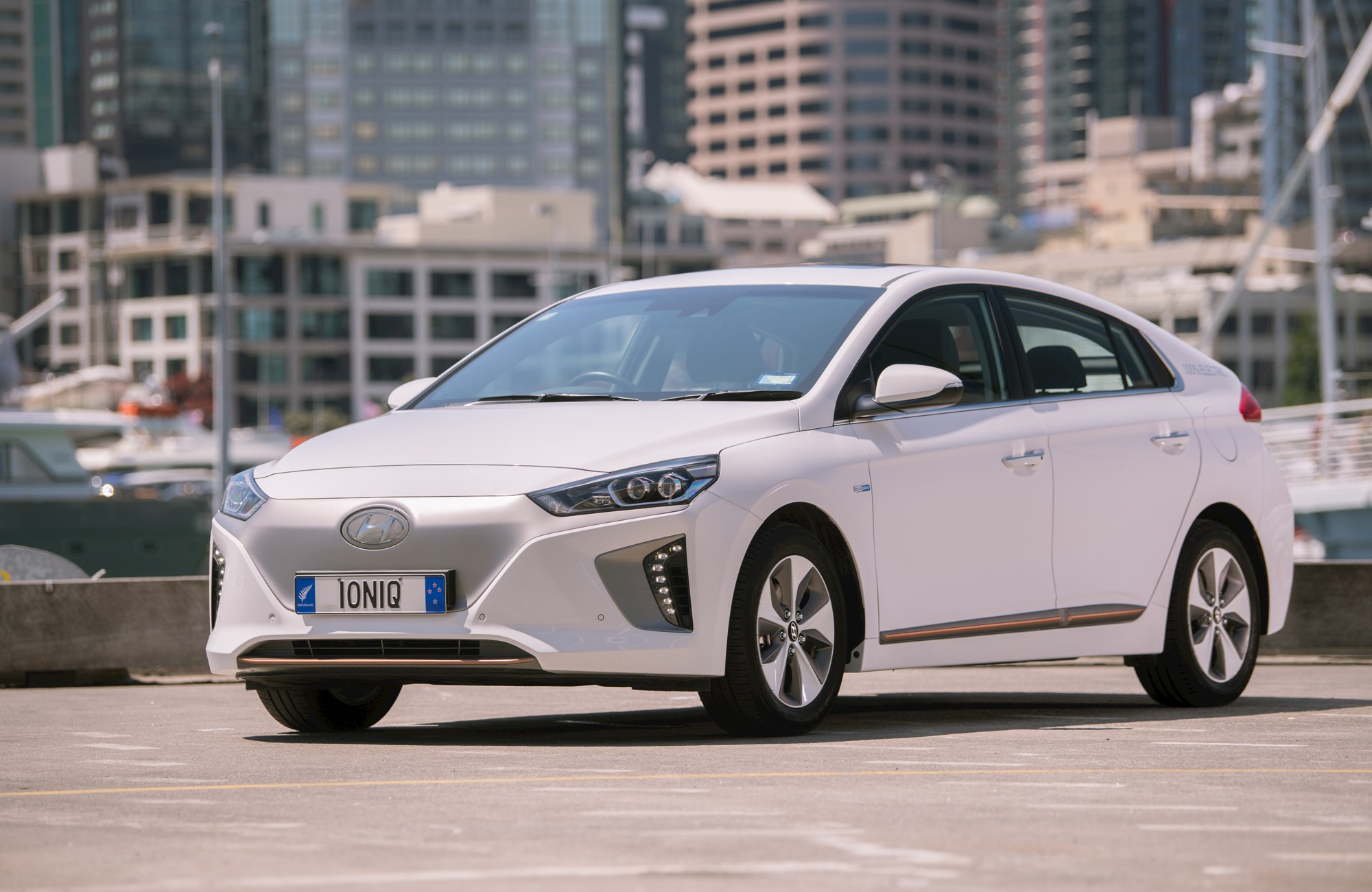
The 2017 automotive headlines included several car makers announcing strategies to electrify their full future model ranges – in some places mis-reported as the imminent demise of the internal combustion engine.
Those needing a guide to the new world of electrification have found an example in the Hyundai NZ range.
The Korean marque launched the Ioniq sub-brand at the start of 2017. The model range spans the electric options — full battery electric or petrol-electric parallel hybrid at this stage with a third ''half-way house'' choice of plug-in hybrid still to come — conventionally packaged in a family-size five-door hatchback body.
Ioniq's choices range from low consumption and emissions with the only constraint on range being the size of the full tank and location of a service station. That changes to something in the region of 200km of full electric and zero-emissions motoring – requiring careful planning of trips and recharging if venturing much further than the daily commute.
The Ioniq range is a ''here-and-now'' example from a mainstream brand of how electrification will be applied in the foreseeable future.
While some car makers grabbed headlines with their plans, Hyundai NZ was delivering a vehicle to its showrooms that covers the electrification options and has the performance, refinement and conventional driving techniques that also makes it a smooth transition into the new electric world.
Read our full Hyundai Ioniq EV road test here.
-Colin Smith
Motorbike of the Year: BMW G 310 R
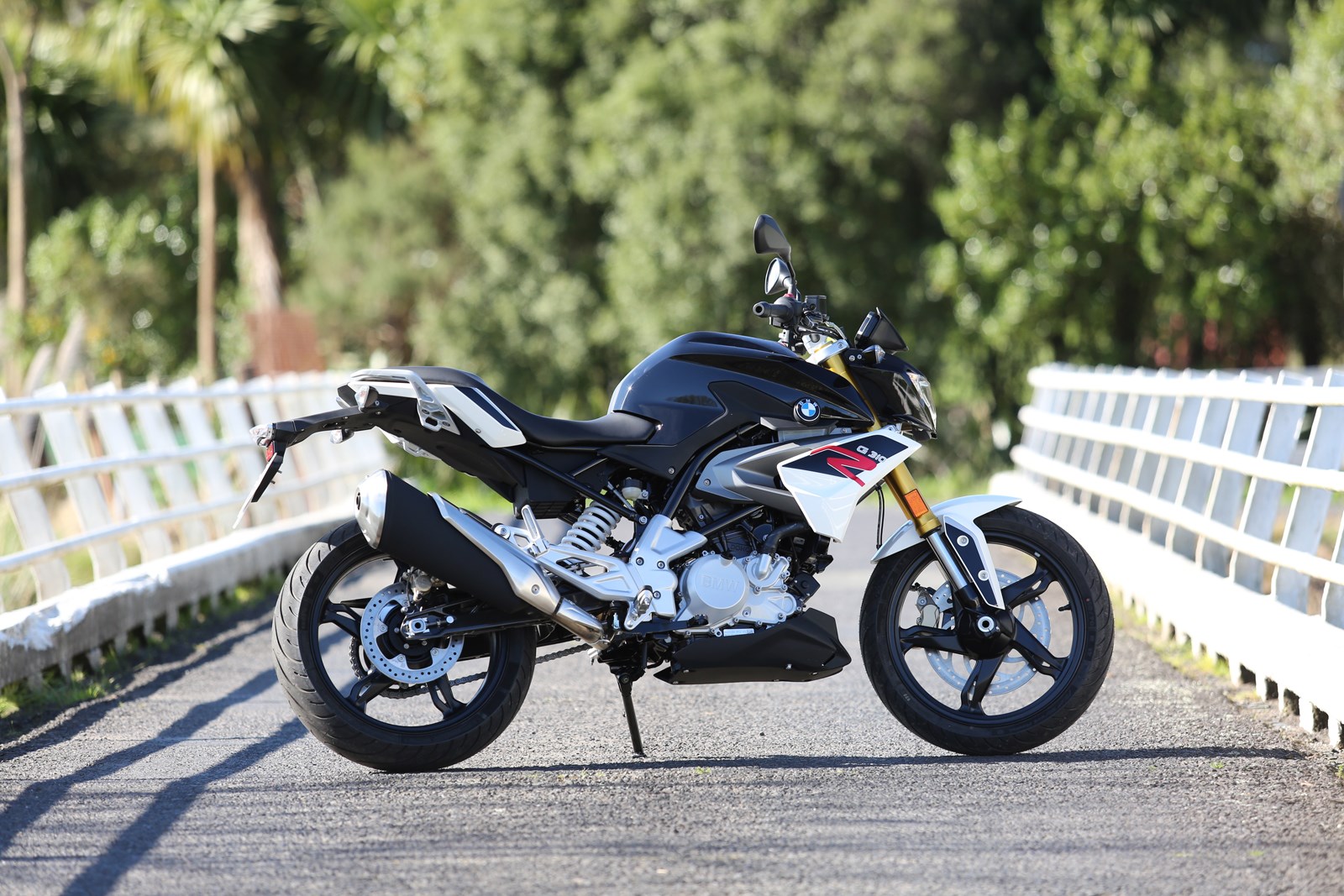
Selecting this year's Driven Bike of the Year was a tough ask and, with the range of bikes we've ridden this year – all worthy contenders, I certainly had my work cut out for me.
Not only has 2017 seen tremendous advances in motorcycling technology, with further innovations in safety and on-board electronics but I thoroughly fell in love with a handful of bikes I could easily ride into the sunset.
However, there could only be one winner, which – beating out the likes of Ducati's Supersport and Honda's CRF250L Rally – was BMW's G 310 R, a LAMS-class bike.
Now I know it's controversial to pull a Learner Approved Motorcycle onto the top of the podium but my reasoning for the baby Beemer being my top bike of the year is simple.
Bikes are meant to be ridden and enjoyed and not only can the G 310 R do that for riders of all skill levels, it is also a shining example of what the motorcycle industry needs more of, if there is to be any hope of motorcycling not dying out in coming decades.
With a punchy 313cc, single-cylinder engine producing 25kW of power and 28Nm of torque, a comfortable riding position and BMW's legendary build quality, this bike has plenty of appeal, especially for the urban rider.
If the Roadster styling doesn't do it for you, the G 310 R has already spawned another variant – the G 310 GS – which prompts aspirational thoughts of the style and spirit of the legendary R 1200 GS in the minds of G 310 riders.
The future of motorcycling lies with bikes able to make 'hero machines' accessible – be it on pricing or the ability of riders to manage the things, regardless of their skill level.
With rumours of a sports version of the G 310 in the works (think a miniature S 1000 RR), BMW is not only bringing riders into the brand early, it is also giving potential riders a taste of the joys of riding, whatever their style preference.
Despite what your mum might say to the contrary, we need to encourage entry-level motorcycling as a form of transport that is not only practical, but also a lot of fun. The G 310 takes the gong, because it does just that.
Read our BMW G 310 R Road Test.
-Mathieu Day-Gillett














